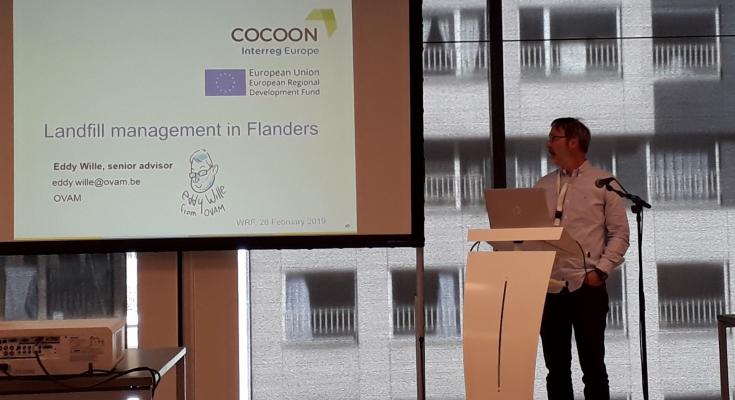Event
COCOON workshop at the World Resources Forum
26 Feb 2019
00 : 00 - 00 : 00 CET
In person

On February 26, 2019 COCOON hosted a workshop on “Landfill management: from landfill to useful resource” at the World Resources Forum in Antwerp (Belgium).
About 20 people participated in the workshop. First some presentations were given to tease the participants on the topic, followed by discussion with a panel answering the questions from the audience.
You can find the presentations here:
After the presentations an animated discussion on different aspects of landfill management took place. Questions with regard to leachate treatment, landfill monitoring, asbestos in landfills, old landfills and brownfields, and the leading actors in landfill management were answered and discussed.
Some conclusions from the workshop:
About 20 people participated in the workshop. First some presentations were given to tease the participants on the topic, followed by discussion with a panel answering the questions from the audience.
You can find the presentations here:
- Welcome and introduction by Annick Vastiau (VITO /Cleantech Flanders)
- Impressions from the event in the European Parliament (November 2018) by Peter Tom Jones (KU Leuven)
- Results of the landfill management mapping in the 6 COCOON regions by Michaël Van Raemdonck (OVAM)
- Landfill management in the Netherlands by Fons van de Sande (Rijkswaterstaat)
- Landfill management in Flanders and EU by Eddy Wille (OVAM)
- Classification system for resources at landfills by Andrea Winterstetter (VITO)
- The landfill directive with regard to follow up of former landfills led by Eddy Wille (OVAM)
- Panel debate: Q&A with Peter Tom Jones, Fons van de Sande, Michaël Van Raemdonck, Eddy Wille and Andrea Winterstetter
After the presentations an animated discussion on different aspects of landfill management took place. Questions with regard to leachate treatment, landfill monitoring, asbestos in landfills, old landfills and brownfields, and the leading actors in landfill management were answered and discussed.
Some conclusions from the workshop:
- Landfill paradigm needs to change from a risk-based, static view to a comprehensive, long-term, multi-phased Dynamic Landfill Management (DLM) vision.
- DLM gives regions the opportunity to make choices on what to do with the landfills in their region (permanent or interim use) and prioritise landfills in order to monitor, map, treat, ... them.
- For management of landfills we can learn from brownfields, both are (potentially) contaminated sites that need to be redeveloped. In some regions this is already the case.